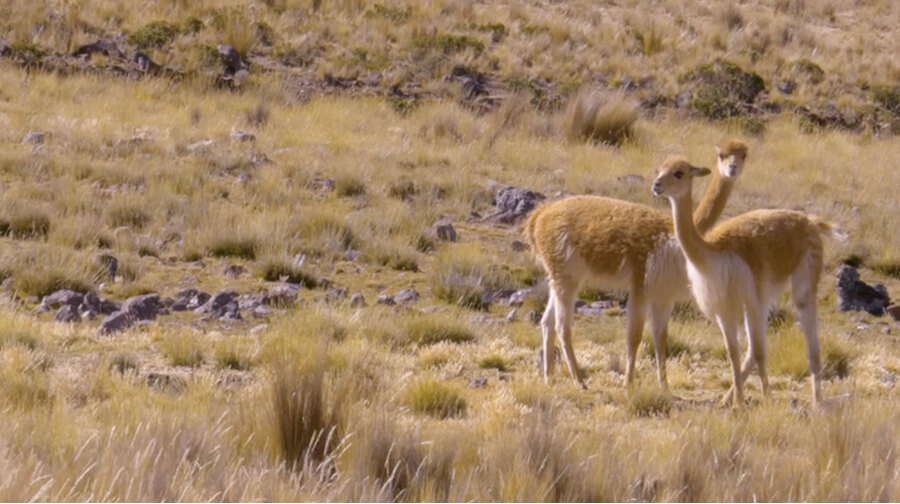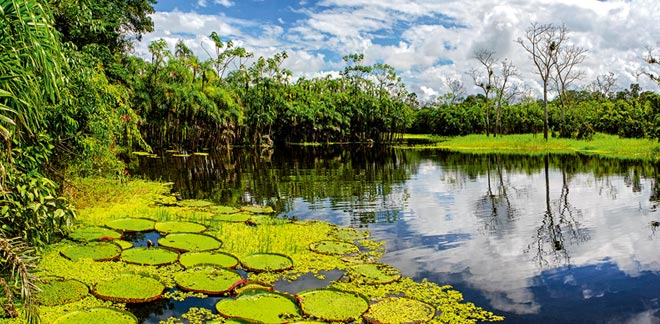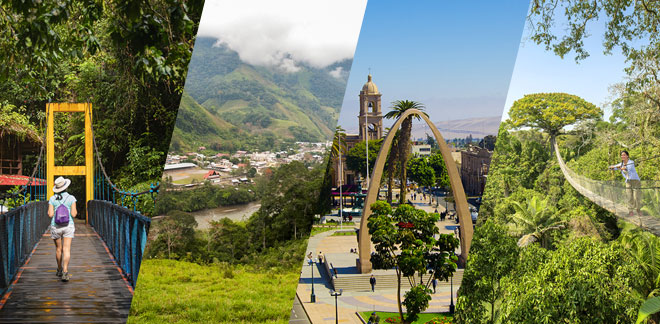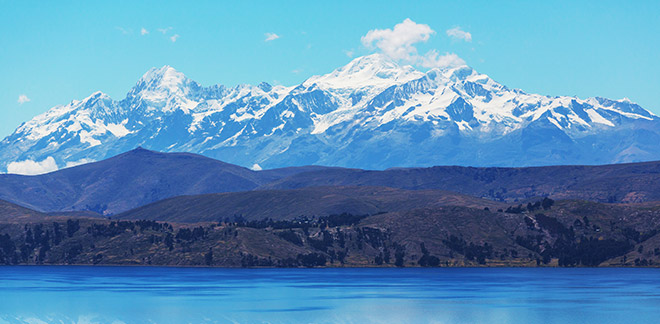“The rarest fabric on Earth”
Síguenos en:Google News
By Meg Lukens Noonan & Tom Garmeson
The once-endangered vicuna is thriving in the Peruvian Andes, thanks to a bold plan to sustainably gather and sell its valuable fleece – and give locals a stake in its survival.
The golden fleece
The vicuna occupies an important place in the heart and soul of Peru. The llama’s smaller, more elegant relative is the country’s national animal and graces its flag, coat of arms and coins. At the height of the Inca Empire, roughly two million vicunas roamed the Andes Altiplano, the desolate, wind-swept plateau that stretches from southern Peru to northern Argentina.
Incas believed vicuna had special powers: killing them was forbidden. And only Inca nobility was allowed to wear garments made of cloth woven from the vicuna’s extraordinarily fine, cinnamon-coloured coat. That golden fleece, coveted by man for centuries, nearly led to the species extinction – and ultimately became its salvation. Soft but tough
Soft but tough
The animals may look delicate but they are built to handle the extremes of high-altitude living. High red blood cell counts increase their ability to process oxygen. A unique digestive system allows them to survive on tough ichu bunch grass. Most remarkable, though, is their fluffy, highly insulating fleece. Made up of individual fibres measuring just 12 to 14 microns in diameter, it’s one of the world’s finest natural fibres (by contrast, cashmere ranges from 14 to 19 microns, and mohair, about 25 microns).
In the world of textiles, the finer the fibre, the softer and more valuable it is. The labour-intensive process required to gather the vicuna’s slow-growing wool makes it that much more alluring – and expensive. Vicuna goods sell for roughly five times the price of similar cashmere products.
“Nature has made the vicuna so perfect, so amazing… that its wool is considered to be the finest in the world", said biologist Santiago Paredes Guerrero.
A humane ritual
In Inca times, the precious fleece was harvested every four years in an elaborate and humane ritual called the chaccu, during which great herds of vicunas were rounded up, then sheared and released. The finished cloth was treated like gold and stored in imperial warehouses.
When Spanish conquistadors arrived in 1532 and discovered the gossamer fleece, they began hunting the animals with guns. The slaughter continued unabated for centuries. By the mid-20th Century, when vicuna overcoats were considered the height of luxury in the US and Europe, the vicuna population had plummeted to fewer than 10,000. They were on the path to extinction.
A need to protect
Desperate to turn the tide, Peru set up the country’s first vicuna sanctuary, the 16,000-acre Pampa Galeras National Reserve in the mountainous Lucanas Province in 1967. Two years later, it banned all trade of vicuna products. In 1975, the Convention on International Trade in Endangered Species (CITES) declared the vicuna ‘most endangered’, and placed its own ban on all international commerce of vicuna products.
But poachers, driven by the high prices on the black market – around $1,000 a kilo – were undeterred. Enforcement of laws was nearly impossible: the vicuna habitat was far too vast and remote to patrol. The population continued to dwindle.
Bringing back a tradition
Officials and conservationists knew they had to come up with a bold plan to save the sacred animal. What if the old Inca-style chaccu round-up was resurrected? What if rural villagers were declared the custodians of the vicunas that lived in their region and were granted the rights to shear and sell fibre from the animals?
Sustainable live-shearing would generate income for some of the country’s poorest and most isolated communities, and give them a reason to protect the animals from illegal hunting. The plan would also discourage poachers; there’s no point in killing a vicuna whose valuable coat has already been removed.
“Una vicuña esquilada, una vicuña salvada A sheared vicuna is a saved vicuna]", said German Freyre, former general manager of Incalpaca, a Peruvian textile company.
A remarkable recovery
The population started to rebound and, in 1994, the ban on international trade was lifted. In 2008, the vicuna was downgraded to ‘least concern’ on the list of threatened species.
“The vicuna is one of the few species in the world that has recovered from being endangered,” said Santiago Paredes Guerrero, a biologist at Pampa Galeras. “It was on the cusp of disappearing. And thanks to conservation efforts, the population has recovered. Right now, we have more than 200,000 vicunas in Peru. It’s a symbolic animal, and as a biologist, I’ve always wanted to work with the kind of animal that is so representative of Peruvian national biodiversity".
A welcoming ceremony
These days, chaccus are staged in rural communities throughout Peru. Some, like the one held annually on 24 June in what is now called the Pampa Galeras Barbara D’Achille National Reserve, are open to tourists, and include elements of Inca pageantry, with costumes, music and dancing. Several bus tour companies make the roughly 100km trip to the chaccu (and year-round for general wildlife viewing) from Nazca, following a steep winding road through dry hills and grasslands to the park.
The first stop for visitors is usually a small museum with exhibits about vicuna and other local wildlife, including the guanaco, a bulkier cousin of the vicuna, as well as the massive Andean condor. There are also rustic accommodations available for independent travellers.
Setting up a corral
“What the local communities do at this time of year is set up two lines of wooden posts across several kilometres to create a bottleneck, the idea being to fence in the vicunas", Paredes said. “This is done the day before the chaccu. Then… with several ropes tied together and [decorated] with lots of pieces of plastic, and with things that make noise, they push the vicunas towards that bottleneck.
At the end of the bottleneck there are posts which have been set up to form a corral – the vicunas are led into that corral. Once the vicunas arrive… there’s a ceremony in which the Inca make an offering of vicuna wool to the Sun God".
A careful shearing
Rangers monitor the chaccu to make sure the animals are not stressed or harmed in any way. Individual vicunas can only be sheared every two years (modern research has shown that vicunas can be sheared this often without causing them harm).
“We’re selecting animals that are appropriate… shearing them and then releasing them,” said Victor Cotrina, head of the Lucanas community vicuna project. “We’re also doing a health check for all the vicunas… This is the only chance we have to carry out this kind of work".
The sheared wool – about 200 grams per animal – is hand-cleaned then readied for sale. The raw fibre will sell for between $300 and $450 per kilo, according to "Trade in vicuna fibre: implications for conservation and rural livelihoods,” co-authored by Alexander Kasterine and Gabriela Lichtenstein and published by the International Trade Centre". Villages earn 2-6 % of the price of finished vicuna products – too low in the opinion of advocates who are looking for ways to add value at the grassroots level.
“During the shearing they are brought out in groups so that the operation can happen calmly. [The work] is fast. It’s all seen from the perspective of animal welfare", said Victor Cotrina, head of the Lucanas community vicuna project.
The delicate fabric for sale
Some fleece stays in Peru for use by domestic textile manufacturers and artisans, but most is exported by Loro Piana, an Italian luxury goods maker, which has the specialised machinery to spin and weave the delicate fibres, and which has played an active role in Peru’s conservation efforts, even establishing its own reserve in 2008. Among the company’s pure vicuna offerings are scarves for $3,195, jumpers for $4,795, blankets for $12,000 and jackets for $18,595.
Though the vicuna comeback is a success story, the animals and communities remain at risk, in part because of the Andes’ vulnerability to climate change. Rising temperatures, glacial retreat and drought threaten both the vicuna habitat – and the villagers’ way of life.
Source: BBC Travel








